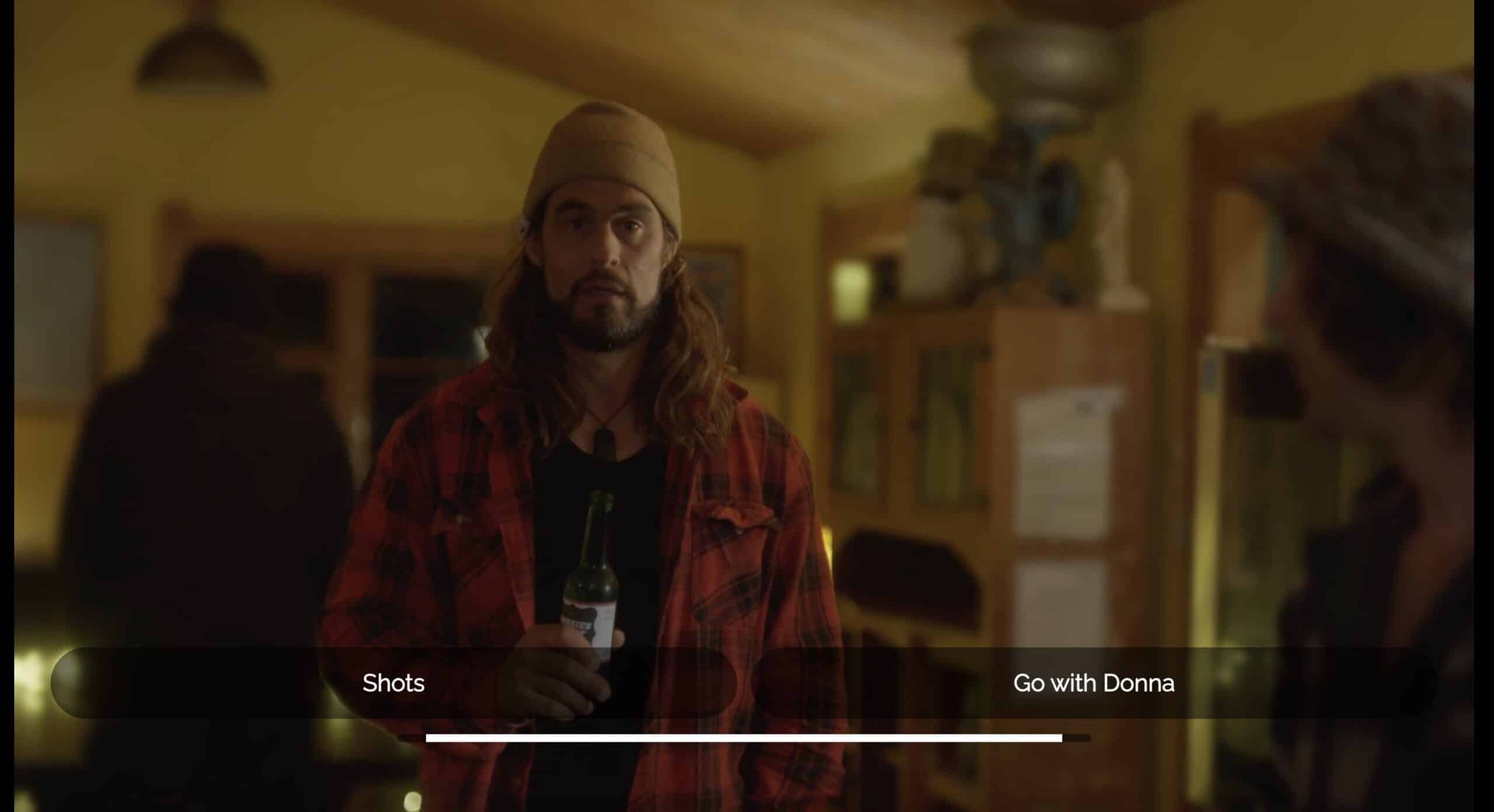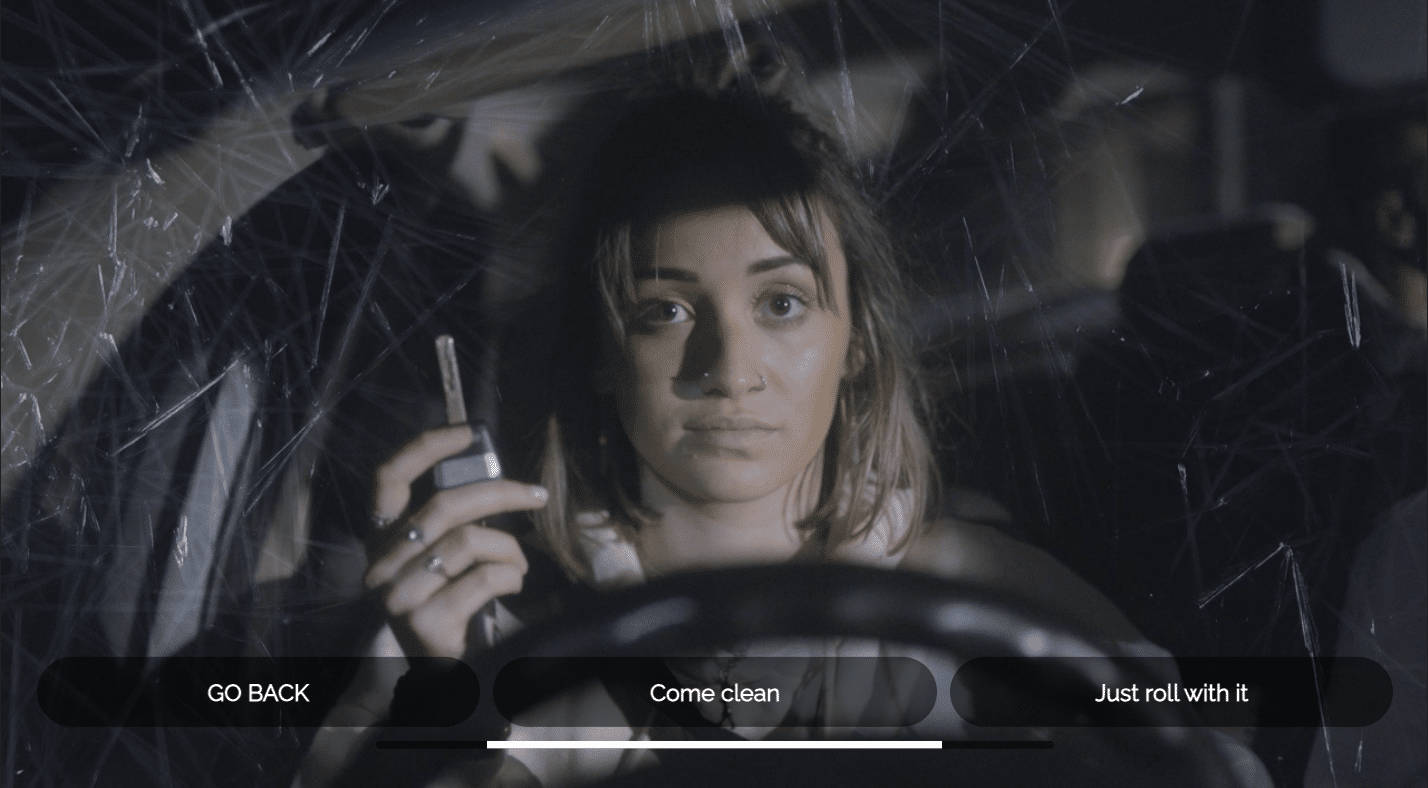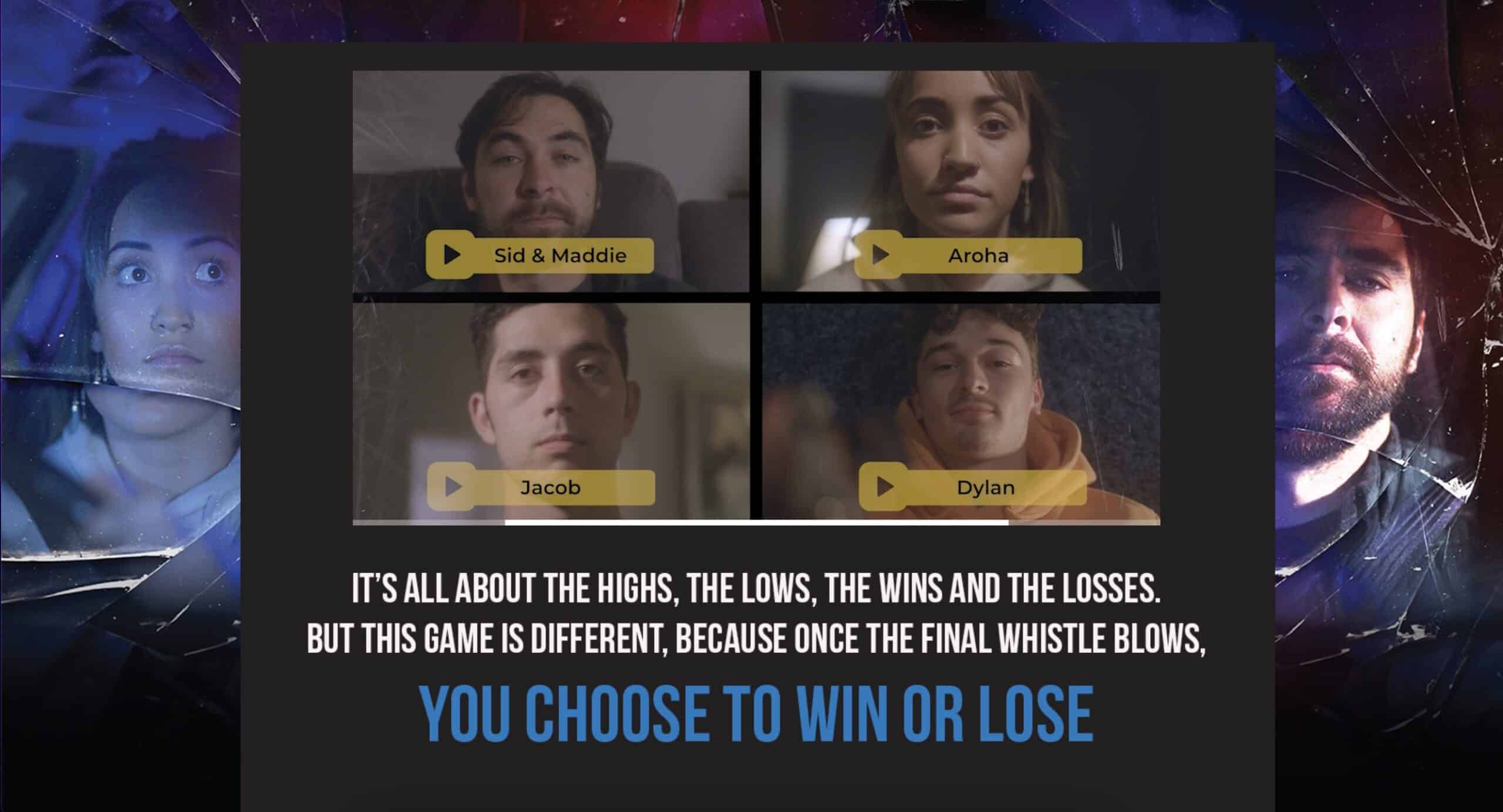by Brock Horning | May 2024
Clients can be hesitant about risking their budgets on a new concept or technology. Government departments even more so. But New Zealand video production company Facebox has already got this challenge in the bag.
Their campaign for Auckland Transport has recently launched. The social awareness campaign engages people in the serious topic of drink-driving. Facebox’s Kevin George takes us through how they picked up the commission.
The Project
To challenge the growing culture of drink-driving in rural communities around Auckland, New Zealand. Auckland Transport commissioned Facebox to deliver an informative yet engaging social awareness campaign.
The Challenge
How do you engage people in a serious topic like drink-driving? How will the project challenge normalised perceptions and spark changes in attitude?
The Solution
The result was After The Game. This interactive short film follows four different people as they head home from watching a rugby match on TV. Viewers get to pick which driver to follow and make decisions for them as the night progresses. They get to see the consequences of their decisions playing out in front of them, for better or worse.
The Recipe for Success: How do you engage people in a serious topic like drink-driving?
🎲 Gamified experiences have greater information retention
“Gamified content has a greater chance of engagement because it’s something to do. It’s not passive.”
Passive experiences don’t engage the brain as effectively as active experiences. To engage Auckland’s rural communities, Kevin and his team decided on a gamified approach to increase information retention. Interactive video provided the perfect medium to put viewers in the driving seat, so to speak. Making decisions for the on-screen characters encourages players to build up an emotional investment in the outcome for each character.
🎭 Use narrative storytelling techniques
“People can smell an advert a mile away. We are aiming to make stories that people would watch on YouTube or Netflix.”
The power of storytelling cannot be underestimated. Kevin recommends using narrative techniques to boost the emotional connection between viewers and on-screen characters. The team were conscious of avoiding any logos or similar elements that would make the campaign feel too much like an advert. For the stories themselves, Kevin has found success with dramatic or humorous storylines. Scenes or situations with these strong emotions give a higher chance of retaining that memory and message.
🫂 Create emotional connections to provide other perspectives
“I want people to look at the decisions they’re making and then evaluate their own decisions – how would I react in that situation? That is where real change will happen.”
To bring the message solidly into the real world, Kevin asked the actors to relay their own real-life experiences of driving incidents in a post-film scene. After building emotional connections with the actors, this scene really sought to drive the message home. Interactive video allowed the fictional and factual to co-exist easily and naturally in the same video and project.
When pitching interactive video productions to prospective clients, what should agency teams consider? Kevin gives his thoughts:
The Agency Perspective
👉 Harness the “I want that” impact
This is when someone sees some work or marketing and says: “I want that”. Before After The Game, Kevin and his team produced an interactive short film called The Party to work out the process of making interactive films today. While The Party itself wasn’t an earner, it proved that Facebox believed in the concept and could deliver. It also drew in two different commissions from two new clients who saw it and said: “I want that”.

📊 Get the right metrics of success
“We’re better off having 1,000 people go through the experience and it sticking with 50% of them than 10,000 people go through and it sticks with 1%.”
All clients will want to know that they received strong return on their investment so consider your metrics of success carefully. With After The Game, Facebox are not accountable for views but they are responsible for length of view to measure how engaging viewers find the experience. Other social awareness campaigns have gone a step further by collecting attitude data before and after the interactive experience to register any change.
🪄 Provide extra value with project analytics
Interactive videos can reveal much about your audience. Which route do they take through the experience? Which characters do they choose to follow? What do they choose to see? This data can be organised and analysed with added insights to drive higher value for clients.
And on the other side of this coin, agencies should always be looking to improve interactive projects with the analytics data. For example, Kevin looked at correlations between marketing approach and viewer pathways to determine which marketing strategies were having more impact than others.
The Stornaway difference
🦸♀️ Customer support
“The customer support at Stornaway is next level”. Stornaway’s support team has a glowing reputation. And they are proud of it. Stellar support is part of the package so whatever project you are delivering, you can be sure that it’ll go off without a hitch.
🗺 Story map
To use Kevin’s own words: “interactive storylines can be a real headf**k.” Stornaway’s Story Map makes it clear and easy to follow the different paths a viewer may take. It helps get all stakeholders on the same page.
🔁 Easy to update
Hosted within Stornaway’s own powerful player, your interactive project can be delivered anywhere in the digital world. This means that you only have to update your own project within Stornaway and those updates will be reflected everywhere else.
Ready to jump in and give Stornaway a go?
Its intuitive interface is easy to pick up and play.A little bit about Facebox
Facebox specialises in creating interactive video campaigns as well as producing bulk short-form content and providing agency services globally. Find out more on their website.


